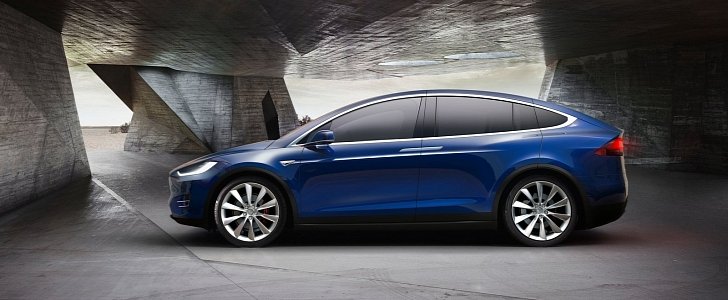Tesla cars are undisputedly the electric vehicles of the moment; not only do they offer unparalleled dynamic performances for any type of propulsion but they also provide the greatest range of an EV.
All this is achieved at a cost, though, and that is a really bulky battery pack. It's all like a domino effect where, in order to increase the range, the car gets bigger batteries, bigger batteries mean more weight, more weight means bigger brakes (that also bring extra pounds) and, to top it all up, there are the electric motors that need to be powerful enough to propel the car to 60 mph in under three seconds or so.
The Tesla engineers needed to balance all these factors (and countless more) and come up with the best solution that would suit most of the company's customers. And they've probably nailed it, as the electric SUV's sales numbers are going to show once its production really kicks in. But what they've also done is push the maximum admitted weight of the vehicle beyond the three metric tons mark (or 6,614 pounds).
That puts the new Tesla in the company of really huge vehicles such as the Lincoln Navigator or the Cadillac Escalade, the kind of cars that should never be seen in urban traffic, yet somehow that seems to be the only place where they can be spotted.
But what it also means is that a Tesla Model X with seven seats and the same number of adults occupying them is going to exceed the maximum admissible weight on New York City's iconic Brooklyn Bridge. The old span that connects Manhattan and Brooklyn was deemed "structurally deficient" by a Federal Highway Administration report back in 2013, but that didn't make the authorities take any action against the numerous overweight vehicles that cross the bridge daily.
With a curb weight of 5,441 lb (2,468 kg), the Tesla Model X has a GVWR - Gross Vehicle Weight Rating - of 6,768 lb (3,070 kg), which officially makes the electric SUV a work vehicle, not a car, qualifying it for a $25,000 tax credit, according to Treehugger.com. So as long as your route doesn't require crossing the Brooklyn Bridge (or the NYPD remains as lax about it as it's been so far), this huge weight of the car would actually be beneficial. And we haven't even mentioned how helpful it would be in case of a crash.
The Tesla engineers needed to balance all these factors (and countless more) and come up with the best solution that would suit most of the company's customers. And they've probably nailed it, as the electric SUV's sales numbers are going to show once its production really kicks in. But what they've also done is push the maximum admitted weight of the vehicle beyond the three metric tons mark (or 6,614 pounds).
That puts the new Tesla in the company of really huge vehicles such as the Lincoln Navigator or the Cadillac Escalade, the kind of cars that should never be seen in urban traffic, yet somehow that seems to be the only place where they can be spotted.
But what it also means is that a Tesla Model X with seven seats and the same number of adults occupying them is going to exceed the maximum admissible weight on New York City's iconic Brooklyn Bridge. The old span that connects Manhattan and Brooklyn was deemed "structurally deficient" by a Federal Highway Administration report back in 2013, but that didn't make the authorities take any action against the numerous overweight vehicles that cross the bridge daily.
With a curb weight of 5,441 lb (2,468 kg), the Tesla Model X has a GVWR - Gross Vehicle Weight Rating - of 6,768 lb (3,070 kg), which officially makes the electric SUV a work vehicle, not a car, qualifying it for a $25,000 tax credit, according to Treehugger.com. So as long as your route doesn't require crossing the Brooklyn Bridge (or the NYPD remains as lax about it as it's been so far), this huge weight of the car would actually be beneficial. And we haven't even mentioned how helpful it would be in case of a crash.

